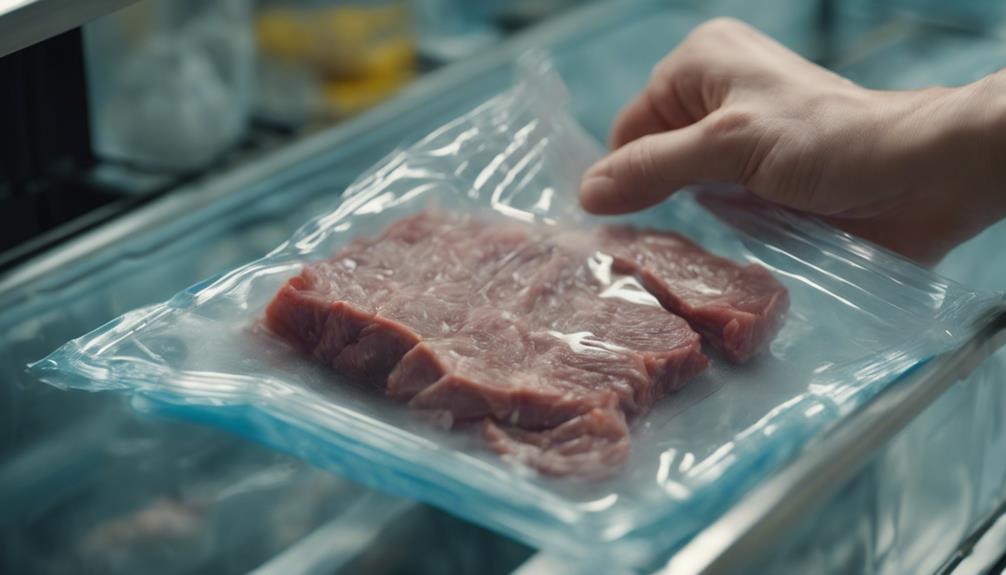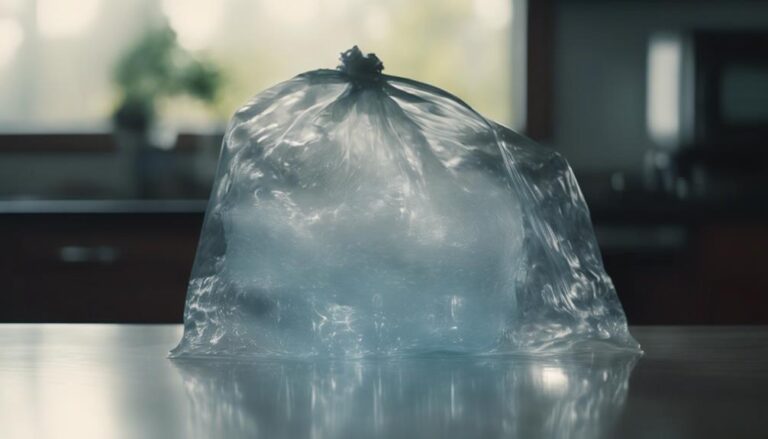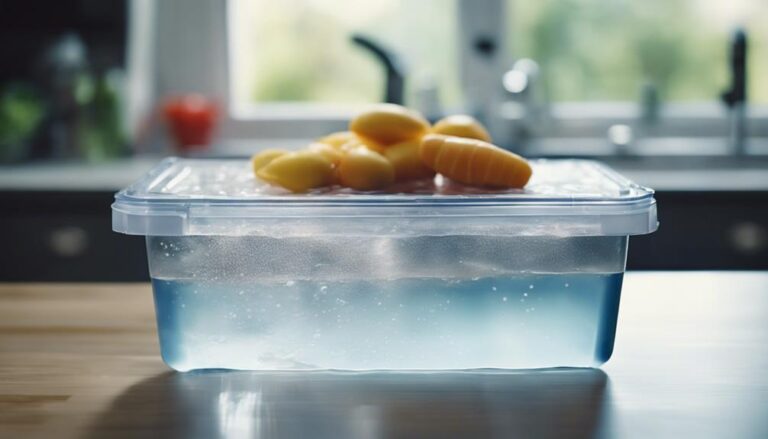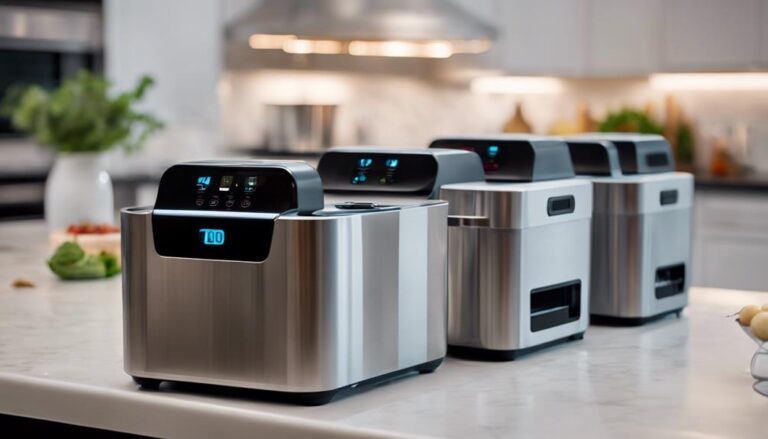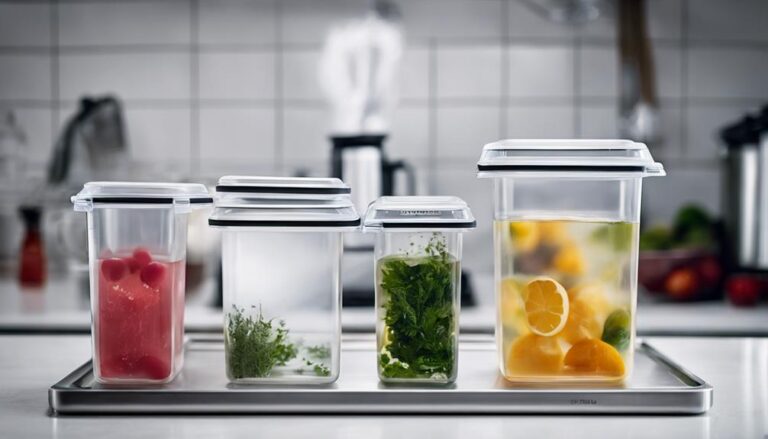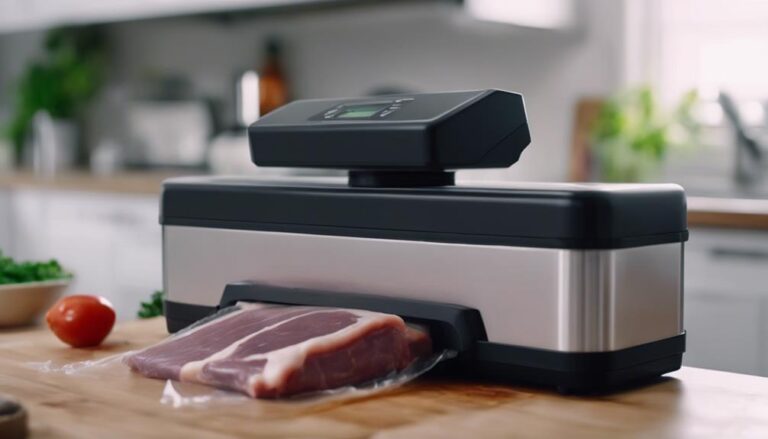Creative Solutions for Sous Vide Cooking Without a Vacuum Sealer
Discover creative solutions for sous vide cooking without a vacuum sealer. Try using resealable bags, the water displacement technique, or immersion method with Ziplock bags. Consider silicone pouches or Mason jars for vacuum-sealing. Experiment with hand pump sealers or the aluminum foil packet method. For a simple hack, secure food with plastic wrap and twine. These alternatives offer precision and flavor infusion in your dishes.
What You Will Learn Here
- Utilize resealable bags with water displacement for precise sealing and flavor infusion.
- Employ silicone pouches for eco-friendly, reusable, and vacuum-like sealing.
- Use mason jars submerged in water for a vacuum seal in sous vide cooking.
- Opt for the foil packet method for juicy, flavorful, and customizable cooking.
- Adjust cooking times and secure food with plastic wrap and twine for successful sous vide cooking.
Resealable Bags Method
If you lack a vacuum sealer, you can still enjoy the benefits of sous vide cooking by using resealable bags. A great freezer bag alternative for sous vide cooking is to utilize sturdy, high-quality resealable bags. These bags are designed to withstand heat and are safe for cooking.
To create a DIY vacuum sealing solution, simply partially seal the bag containing your food, then slowly lower it into a container of water. The water pressure will push the air out of the bag, allowing you to seal it completely. This technique helps maintain the airtight seal necessary for sous vide cooking.
When using resealable bags for sous vide cooking, make sure to eliminate as much air as possible before sealing the bag. This will guarantee that your food cooks evenly and retains its flavor. Additionally, be mindful of the recommended cooking times and temperatures for different types of food when using this method. By following these tips, you can still achieve delicious sous vide dishes without the need for a vacuum sealer.
Water Displacement Technique
To achieve a proper seal when using resealable bags for sous vide cooking without a vacuum sealer, employ the water displacement technique. This method is one of the sous vide hacks that can help you create a secure seal on your ingredients, ensuring they cook perfectly in the water bath.
Here's how you can use the water displacement technique as one of the water displacement alternatives: Place your seasoned food in a resealable bag, leaving the top part unsealed. Slowly lower the bag into a container of water, allowing the water pressure to push the air out of the bag. Once most of the air is out, carefully seal the bag just above the waterline. This technique creates a vacuum-like seal that's essential for successful sous vide cooking.
Immersion Method With Ziplock Bags
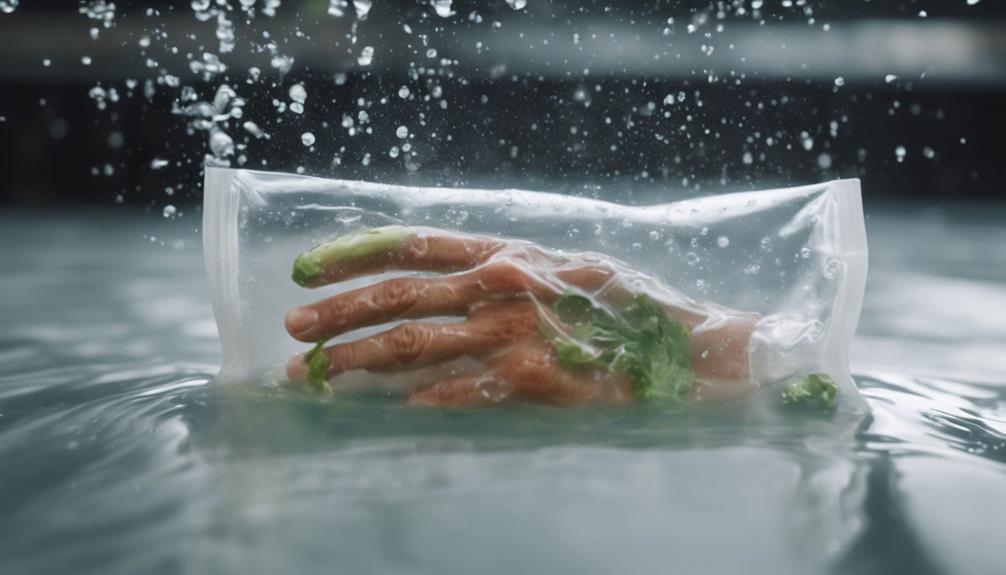
Consider using the immersion method with ziplock bags as a convenient alternative for sous vide cooking without a vacuum sealer. When you're in a pinch and still want to enjoy the benefits of sous vide cooking, using ziplock bags and the water displacement technique can be a game-changer. Here are some immersion bags creativity and Ziplock hacks practicality tips to get you started:
| Immersion Bags Creativity | Ziplock Hacks Practicality | Benefits |
|---|---|---|
| Use heavy-duty freezer Ziplock bags for durability | Squeeze out excess air before sealing to prevent floating | Cost-effective solution |
| Double-bag your ingredients for added protection | Use the water displacement method to remove air efficiently | Easy to find in most stores |
| Consider using reusable silicone Ziplock bags for sustainability | Seal the bag just before the seal to prevent water from entering | Versatile and can be used for various cooking methods |
Silicone Pouches for Sous Vide
When looking to explore other options for sous vide cooking without a vacuum sealer, silicone pouches can be a versatile and reusable alternative to explore. Silicone pouches offer several pros, such as being durable, easy to clean, and reusable, making them a sustainable choice for sous vide cooking. However, they can be a bit more expensive upfront compared to disposable bags.
To sous vide without a vacuum sealer using silicone pouches, simply place your seasoned ingredients inside the pouch, leaving some room for air. Seal the pouch almost entirely, leaving a small opening to allow air to escape. Slowly submerge the pouch in the water bath, allowing the water pressure to push out the remaining air. Once most of the air is out, seal the pouch completely and cook as usual.
Silicone pouches are a great option for those looking for a more eco-friendly and long-term solution for sous vide cooking without the need for a vacuum sealer.
Mason Jars for Vacuum-sealing
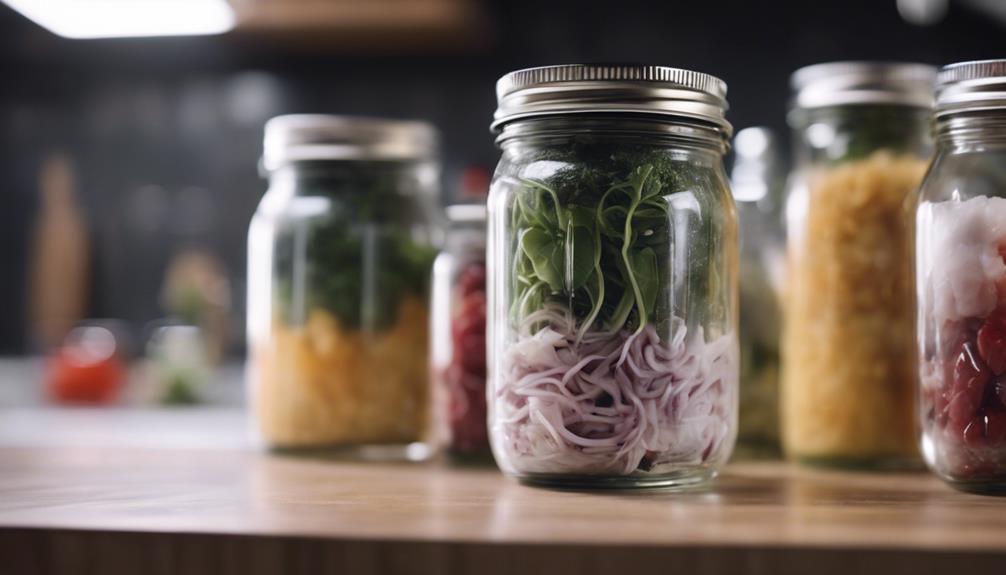
If you're looking to vacuum-seal your ingredients without a vacuum sealer, Mason jars can be a great alternative.
To start, mastering the jar sealing technique is key for successful sous vide cooking with this method.
Additionally, remember to follow safety tips to guarantee your jars are properly sealed and safe to use.
Jar Sealing Technique
To vacuum-seal using mason jars, simply use the jar sealing technique. If you're looking for vacuum sealer alternatives, consider using canning jars. Fill the jar with your ingredients, leaving some space at the top, and then place the lid on top.
Next, submerge the jar in water, ensuring that the water level is just below the lid. Using a pressure cooker, set it to the appropriate temperature and pressure for your recipe. As the pressure cooker heats up, the air inside the jar will expand and escape through the lid's seal.
Once the cooking is done, the cooling process will create a vacuum seal, preserving your food perfectly for a delicious sous vide experience using this simple yet effective method with mason jars.
Safety Tips for Jars
To guarantee safe vacuum-sealing using mason jars, prioritize using jars specifically designed for canning to withstand the pressure and heat involved in the process.
When using mason jars for sous vide cooking, it's crucial to follow specific safety precautions to make sure your food stays fresh and safe to eat.
Here are some tips to help you maintain the integrity of your food storage and cooking process:
- Choose Quality Jars: Opt for jars designed for canning as they're built to withstand the pressure changes during vacuum-sealing.
- Inspect for Damage: Before use, check jars for cracks or chips that could compromise the seal.
- Avoid Extreme Temperature Changes: Gradually introduce jars to hot water to prevent breakage during the sous vide process.
Hand Pump Sealers for Sous Vide
Consider investing in a hand pump sealer for your sous vide cooking needs. Hand pump alternatives offer a budget-friendly way to create a vacuum seal for your ingredients. These DIY vacuum options are simple to use and provide a reliable seal for your sous vide bags without the need for an expensive machine. With a hand pump sealer, you can remove air from your bags, ensuring even cooking and delicious results.
To use a hand pump sealer, place your ingredients in a sous vide bag, leaving enough space at the top for sealing. Press the zip-top of the bag closed and attach the hand pump to the valve. Pump out the air until you achieve a tight seal. Hand pump sealers are portable, making them ideal for outdoor cooking or smaller kitchens where space is limited.
Investing in a hand pump sealer is a practical and cost-effective solution for sous vide enthusiasts who want to elevate their cooking experience without the need for a traditional vacuum sealer.
Aluminum Foil Packet Method
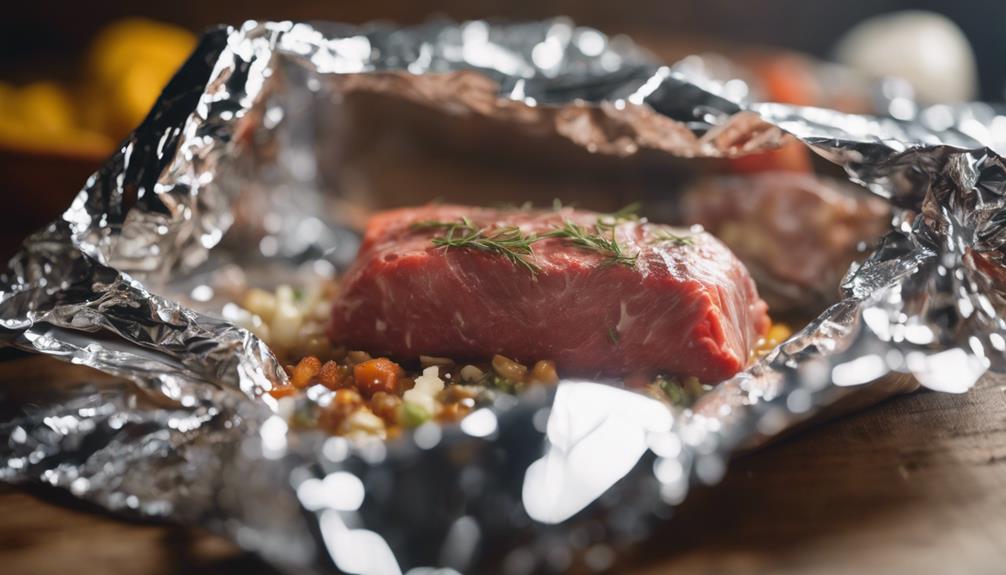
You'll find that the aluminum foil packet method offers convenience and flexibility when cooking sous vide.
Compare the different sealing techniques to see which works best for your needs.
Adjusting cooking times accordingly will guarantee your meals turn out perfectly every time.
Foil Packet Benefits
To enhance the flavors of your sous vide dishes without the need for a vacuum sealer, consider utilizing the foil packet method for a convenient and effective cooking alternative. When using foil packets for sous vide cooking, you'll benefit from:
- *Flavor Retention*: The foil traps in juices and aromas, ensuring your ingredients cook in their own flavorful juices.
- *Customization*: Easily tailor each packet to individual preferences, accommodating various dietary needs and taste preferences.
- *Effortless Cleanup*: Simply discard the foil after cooking, minimizing the mess and allowing you to focus on serving up delicious dishes to your guests.
Try out this method for a hassle-free sous vide experience!
Sealing Techniques Comparison
Enhance your sous vide cooking experience by comparing the sealing techniques, focusing on the efficiency and benefits of the Aluminum Foil Packet Method.
When using the Aluminum Foil Packet Method, consider a bag clip alternative or tape seal for securing your ingredients. These options provide a tight seal, ensuring that your food cooks evenly in the water bath.
Another DIY vacuum sealer hack involves the straw method, where you remove air from the bag by sucking it out with a straw before sealing it. These techniques are practical and effective, offering a convenient way to seal your ingredients without the need for a vacuum sealer.
Experiment with these methods to find the one that works best for your sous vide cooking needs.
Cooking Time Adjustments
For precise sous vide cooking results using the Aluminum Foil Packet Method, adjust the cooking time accordingly based on the type and thickness of the ingredients. When using this method, consider the following:
- Temperature Adjustments: Monitor the water temperature consistently to guarantee even cooking and doneness.
- Cooking Hacks: Utilize sous vide cooking hacks like adding a pinch of baking soda to tenderize tougher cuts of meat.
- Ingredient Substitutions: Experiment with different ingredients while keeping in mind their individual cooking requirements to achieve desired flavor profiles.
Plastic Wrap and Twine Hack
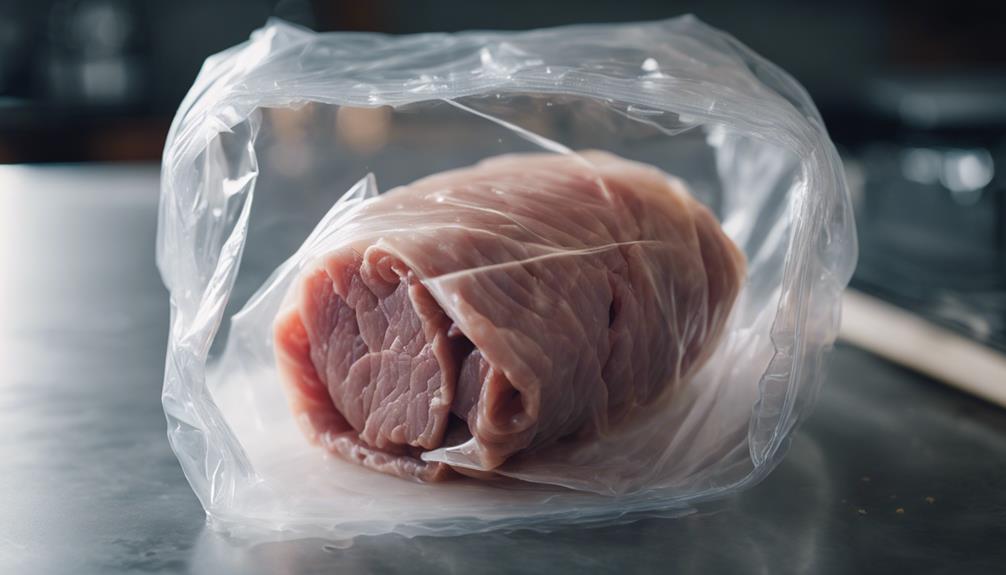
Secure your food for sous vide cooking using a plastic wrap and twine hack. This method is a simple yet effective way to keep your ingredients neatly packed and secure during the cooking process. If you find yourself without a vacuum sealer, this hack will serve you well in preparing your sous vide dishes.
To get started, lay out a piece of plastic wrap on a clean surface. Then, carefully place your food items in the center of the plastic wrap. Next, fold the plastic wrap over the food, ensuring it is tightly sealed. Finally, use kitchen twine to tie up the ends securely, creating a compact package ready for sous vide cooking.
Here is a quick reference table outlining some twine alternatives and plastic wrap alternatives you can use in a pinch:
| Twine Alternatives | Plastic Wrap Alternatives |
|---|---|
| Butcher's twine | Parchment paper |
| Cotton string | Aluminum foil |
| Hemp twine | Silicone food bags |
| Jute twine | Beeswax wraps |
| Kitchen string | Reusable silicone lids |
Frequently Asked Questions
Can I Reuse the Resealable Bags Used in the Resealable Bags Method for Sous Vide Cooking?
Yes, you can reuse resealable bags for sous vide cooking. If you're looking for alternatives to vacuum sealers, try using the water displacement method. Simply seal the bag most of the way, then submerge it to push out excess air before sealing completely.
How Can I Ensure That the Food Is Properly Sealed in the Water Displacement Technique?
To guarantee proper sealing with the water displacement technique for sous vide, press out excess air, submerge the bag in water, and seal tightly. This method ensures food stays secure, promoting temperature accuracy for a delicious meal.
Are There Any Specific Types of Ziplock Bags That Work Best for the Immersion Method With Ziplock Bags?
For the best results with the immersion method using ziplock bags, opt for high-quality freezer bags as they are more durable. Alternatively, you can explore silicone or reusable vacuum bags for a reliable seal.
What Are the Advantages of Using Silicone Pouches for Sous Vide Cooking Over Other Methods?
When you're exploring sous vide alternatives, silicone pouch benefits stand out. These pouches offer reusable convenience, excellent insulation, and are safe for cooking. They elevate your sous vide game with efficiency and eco-friendliness.
How Do I Know if the Mason Jars Are Properly Vacuum-Sealed for Sous Vide Cooking?
To check if mason jars are properly vacuum-sealed for sous vide cooking, gently press down on the lid. If it doesn't pop back up and feels concave, you have that vacuum sealed assurance for a successful cooking process.
Conclusion
To sum up, there are plenty of creative solutions for sous vide cooking without a vacuum sealer. From using resealable bags to water displacement techniques, immersion with ziplock bags, silicone pouches, mason jars, hand pump sealers, aluminum foil packets, and even plastic wrap and twine hacks, there are options for everyone.
Don't let the lack of a vacuum sealer stop you from enjoying the benefits of sous vide cooking at home. Get creative and start experimenting with these alternative methods today!
